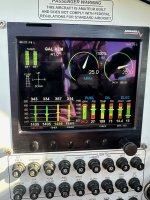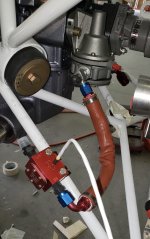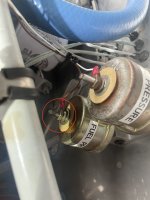briantucker
Member
We're seeing our fuel flow sensor jump to ~21GPH on an IO-360 when the RPM goes past 2000 - normal flow is around 8-10gph depending on leaning. Any ideas what could cause it? There doesn't appear to be any fuel leaking and we can consistently reproduce this (bringing RPM back to 2000 results in normal flow readings). Engine runs fine otherwise. We have dual Lightspeed ignitions so my (naive) assumption is that it's not related to magnetic interference. Engine has 850 hours on it and this is the first we've seen this issue. Ignore the CHT/EGTs, we were fiddling with the mixture to try and fix the flow reading.








